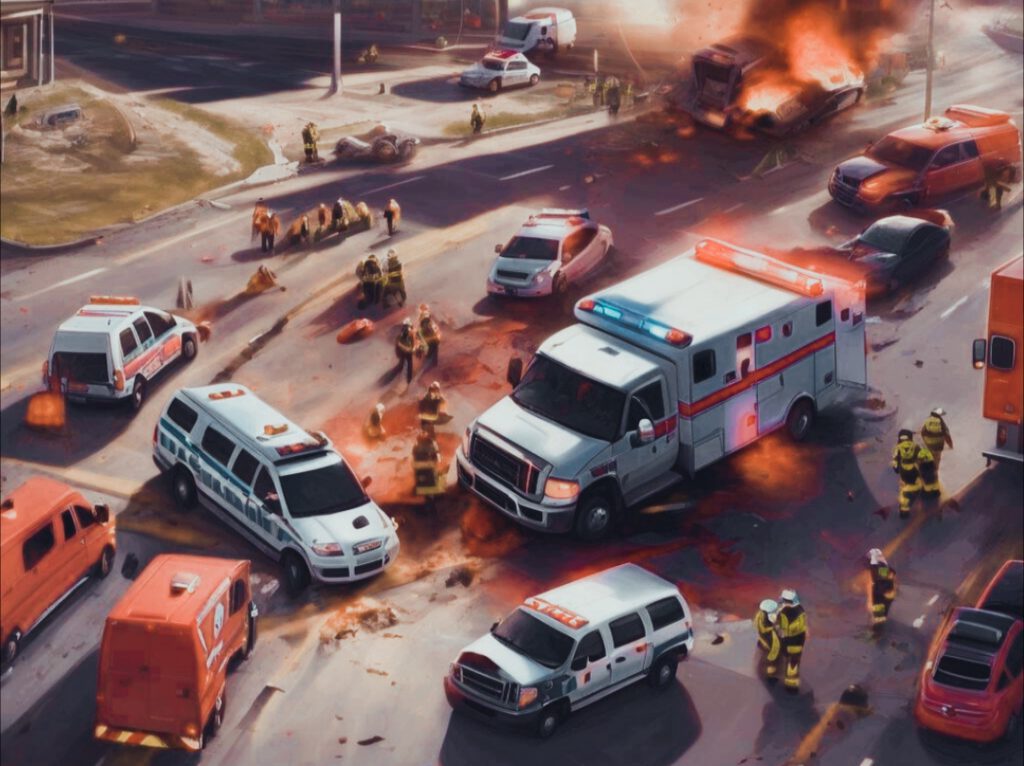First aid enables you to respond quickly and effectively to medical emergencies. In critical situations, every minute counts and basic knowledge in this area can save lives. Acting immediately can often prevent serious complications. People in emergencies are often very agitated or frightened. When you provide first aid, you can not only help address physical needs, but also provide emotional support. Your intervention can have a calming effect and help the affected person feel safer.
Knowing first aid shows responsibility and commitment to the safety and well-being of others. In many jobs, especially in areas with potential hazards, such knowledge can be vital. Emergencies can occur anytime and anywhere: at work, at home or in public spaces. If you know first aid, you will be better prepared to act appropriately in these situations, be it cuts, falls or even more serious injuries.
The deciding factor in emergencies
When more people can provide help, everyone benefits. These skills help to strengthen the overall health and safety culture and improve emergency response. Learning first aid gives you the confidence to act correctly. This knowledge helps reduce fears of risky situations and strengthens the ability to remain calm in stressful situations.
A look at accident statistics: According to the World Health Organization (WHO), around 1.35 million people die in traffic accidents worldwide every year. It is estimated that 20 – 50 million people suffer non-fatal injuries in the same period. The main causes of traffic accidents include speeding, driving under the influence of alcohol or drugs, distractions (e.g. using a cell phone) and lack of safety precautions (such as wearing a seat belt).

Types of accidents: From traffic to household
The numbers are similarly high in the workplace. According to the International Labour Organisation (ILO), there are an estimated 2.3 million work-related accidents and illnesses worldwide each year, which unfortunately can lead to death in the long term. It is estimated that around 374,000 workers die each year directly in the course of their work. High accident rates are often found in the construction, agricultural and manufacturing industries, which should come as no surprise.
Household accidents also pose a significant risk. The most common causes include falls, poisoning, burns and cuts. Children and the elderly are particularly badly affected. Leisure accidents often result from injuries during various activities, whether in a club, during outdoor activities or during a hobby sport. Accident statistics can vary greatly from region to region, depending on infrastructure, legal regulations, safety precautions and the behaviour patterns of the population.
The unforeseen things that happen to us
There are numerous examples of emergency situations in which quick action and first aid may be required. Medical emergencies include cardiac arrest or heart attack, stroke (signs include sudden weakness, speech disorders, facial distortion), shortness of breath or asthma attack, severe allergic reactions (e.g. anaphylaxis), unconsciousness or fainting. Injuries are typically fractures (broken bones), cuts or deep wounds that bleed heavily, burns (all-grade, especially large or deep burns), bruises and contusions as well as injuries caused by falls, accidents or violence.
The road traffic accidents already mentioned, including traffic accidents with injured drivers and pedestrians, as well as bicycle accidents with various causes. Natural disasters are increasingly playing a role: earthquakes, floods, heavy storms or avalanches. Fires in apartments or houses, but also in public facilities or vehicles, sometimes require rapid action until the fire brigade can get to the scene.
Children who are lost in a crowded area need help, as do missing adults, especially those with health problems. There are mental emergencies in the face of obvious suicidal thoughts or attempts, acute psychotic episodes or nervous breakdowns. Toxic substances may be involved, be it poisoning by chemicals or medications and in some cases contact with dangerous animals (snake bites, insect stings). Heat stroke from extreme heat on the one hand and hypothermia from extreme cold on the other are often underestimated. In all of these situations it is important to act quickly and prudently.
First aid: Why commitment is important | How does it work | Where can I learn it – all articles at a glance.

